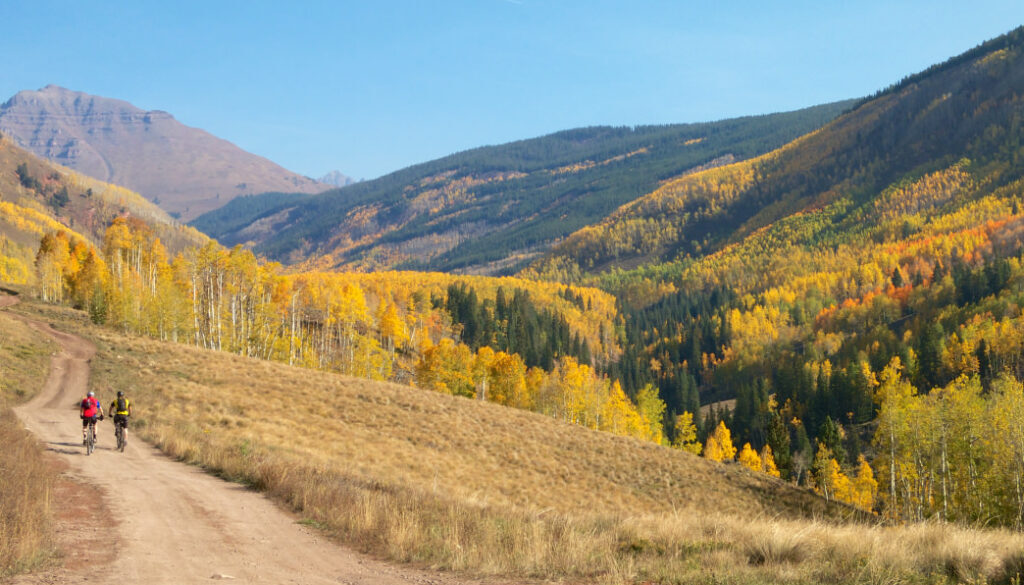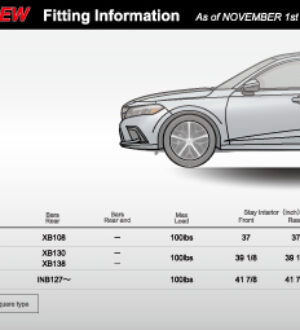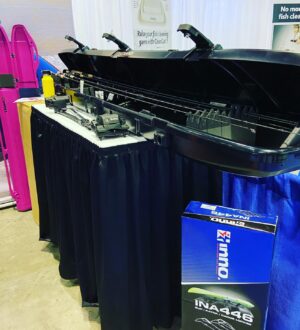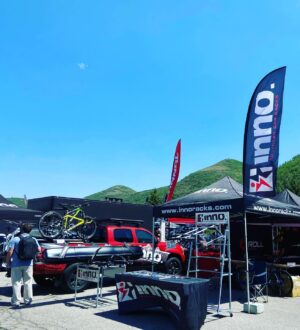How Crested Butte’s Best Mountain Bike Trails Came to Be
Crested Butte is just four hours from Denver, but with its rugged, towering mountains and small town vibe, the Wildflower Capital of Colorado feels about a million miles away from the big city. And despite its reputation as a ski town (and don’t get us wrong, the powder is just as magical as you’ve heard), Crested Butte has just as much going for it in the summer. In addition to the wildflowers, which hit their peak in mid-July, summer in this charming mountain town means it’s mountain biking season. In fact, if you’re a mountain biker, you’ve got Crested Butte to thank.
Crested Butte: A Cradle of Mountain Biking History
The former coal mining town’s mountain biking history isn’t just locally significant. In 1976, the first mountain bike shop in the United States opened in Crested Butte, sparking a knobby-tired revolution. The reason for the town’s early mountain biking popularity? Roads in Crested Butte weren’t paved until the early 1980s, and with seasons’ worth of snow piling up and melting, most roads were riddled with potholes. Sick of damaging their cars, residents eventually took to mostly riding their bikes around town.
Affectionately known as “klunkers,” the fat-tired, 35-pound bikes favored by locals were often a blend of old Schwinn frames and other parts. Unwieldy at best, they were still serviceable enough to get a group of Grubstake Saloon regulars up and over Pearl Pass, the 40-mile mule train route from Crested Butte to Aspen, in the late 1970s. Local legend has it that this first mountain bike ride over 12,075-foot Pearl Pass was Crested Butte’s answer to a crew of Aspen motorcyclists who regularly rode into town to cause debauchery. The tradition stuck, and there’s still an annual crusade over Pearl Pass today, best ridden on a customary klunker bike.

Zach Dischner
Pearl Pass isn’t the only yearly Crested Butte mountain biking event. In the early 1980s, a couple of Californians from Marin County, home of the machine we know today as the mountain bike, were drawn to town for the annual Pearl Pass ride. They arrived on unusual bikes with wide, straight handlebars, knobby tires, and an assortment of gears, the likes of which Crested Butte had never seen. Infatuated by the newly invented mountain bikes, the town was happy to participate in the first MTB stage race. Named for the 11,372-foot pass over which it runs, the Paradise Divide Fat Tire Stage Race eventually became a weeklong festival. These days, Crested Butte Bike Week is held in late June.
In 1988, the Mountain Bike Hall of Fame, which paid homage to the sport’s early Frankenbikes (and the finely tuned machines they eventually spawned), opened its doors on Elk Avenue in Crested Butte. The tiny museum was moved back to its roots in Marin County in 2013 in hopes that it would have more opportunities for growth in the birthplace of modern mountain biking. You can still get a peek at the early incarnations of the modern bike at the Crested Butte Klunker Collection.
Mountain bike history remains alive and well in Crested Butte. It’s home to the oldest mountain biking-specific club in the world, the Crested Butte Mountain Biking Association (CBMBA), founded in 1983. CBMBA is responsible for maintaining and advocating for more than 450 miles of singletrack, supported by member donations and more than 2,500 annual hours of volunteer effort. Don’t underestimate the power of volunteer handiwork, says David Ochs, CBMBA director. “For some of our closer-to-town trails,” he says, “we’ve had 200 folks show up and build 1.4 miles of singletrack in six hours.”
CBMBA’s efforts aren’t just beneficial to the mountain biking community, though they do make it a point to develop trails appropriate for a wide range of ability levels. Its newly-minted offshoot, the Crested Butte Conservation Corps, works on trails in wilderness areas, too, and CBMBA’s efforts are focused on multi-use trails.

TRAILSOURCE.COM
The organization is committed to spreading the love so that no one trail system or area is disproportionately impacted, and building trails with sustainability in mind to minimize the need for future maintenance. CBMBA also takes on restoration projects and avoids maintaining trails that weren’t built to last in the first place, making the entire Crested Butte/Gunnison Valley area a more sustainable recreational destination. If you’re interested in doing your part on a volunteer workday, check out CBMBA’s events calendar or follow them on Facebook.
Ready to make a pilgrimage to this mountain biking mecca? Before you hit the trail, Ochs says, brush up on your MTB etiquette. Part of CBMBA’s success in the Gunnison Valley is thanks to the mountain biking community’s positive impact on the community, and using good mountain bike manners is an essential part of that. Remember, bikers are expected to yield to other user groups, including equestrians, hikers, and other bikers heading uphill. Avoid muddy trails and reduce impact (plus, extend your ride) by riding your bike to the trailhead rather than driving. Finally, be sure you’re not risking trail closure by trespassing, leaving the trail, or leaving gates open after you’ve passed through them.
“It’s really easy to have everyone enjoy our backcountry if we’re all respectful of each other,” Ochs explains, “The bottom line is to just be cool.”
It’s tough to narrow down the best trails in Crested Butte and the Gunnison Valley, which the Gunnison-Crested Butte Tourism Association says offers access to more than 750 miles of singletrack on over 150 different trails. Thanks to the area singletrack’s characteristically grippy dirt, vast, wildflower-filled meadows, and plenty of opportunities for rocky, technical riding, you’ll be hard-pressed to leave Crested Butte. For intermediate riders, Ochs recommends the Lupine 1 and 2 trails, which you can link with Gunsight Connector, or Snodgrass and the Lower Loop.
Intermediate to advanced riders shouldn’t miss the 20-mile Doctor Park Loop, where you’ll climb stout doubletrack up to almost 11,000 feet and be rewarded with a flowy, and at times technical, descent. The 403 and 401 trails, arguably the most widely beloved trails in the area, have a reputation for a reason— the views of the rugged Elk Range are pure Rocky Mountain beauty, with lush alpine meadows carpeting the base of towering, dramatic, snow-capped mountains. Feeling adventurous? Head to Teocalli Ridge or Deer Creek.
“If you’re here for a week and you do one of these rides each day,” Ochs says, “You’ll have just ridden five of the best mountain bike trails anywhere.”
Originally written by RootsRated for Crested Butte & the Gunnison Valley | The Home of Mountain Biking.
Featured image provided by Joshua Powe




